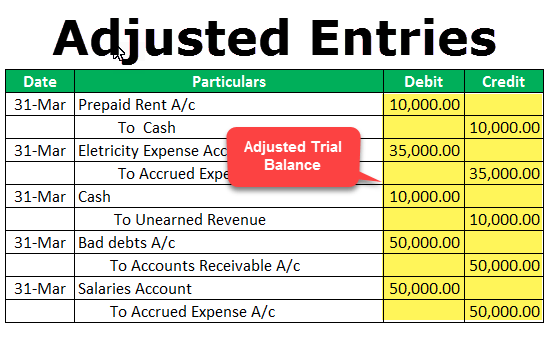
That means any transaction that credits cash is recorded in a cash disbursements journal. Though, a cash disbursements journal only records cash outflows whereas a cash book records both inflows and outflows. Whenever cash payment occurs, it will first be recorded in a cash disbursements journal before posting to other accounting records. With a general journal, you’ll have a record of all your business’s transactions.
It should be noted that there is no universal format for cash disbursements journals. The total cash outflow is then posted to the general ledger, along with the total cash inflow (which can be derived from the cash receipts journal). A cash disbursements journal is summarized at the end of the period, usually a month. This means that aside from actual cash payments, checks and other types of payment are included too. This makes the cash disbursements journal a book of original entry. T’s called the Cash Disbursements Journal – an accounting record that is dedicated to recording all cash outflows of a business.
Fact Checked
While that looks good on paper, that doesn’t mean you have the $400 to pay your bills. Maybe you bought $300 worth of supplies and paid workers $200 to make the product. If you offer your customer 45-day terms, you won’t have the money to pay your supplier or employees unless you keep enough cash on hand or have enough credit available.
The primary purpose of cash disbursement is to pay off business-related expenses. Each of these techniques has its own potential advantages and disadvantages. The right approach can depend on the company’s specific circumstances. Input the information from your disbursement journal into your small business general ledger.
Are there any challenges associated with using a cash payment or cash disbursement journal?
Small and some medium businesses only use cash books to record their cash transactions. This report shows you all of the checks you have written within the selected time period, with a subtotal for each payee, and a grand total at the bottom of the report. At the end of the period, the TOTALS only would be recorded in posted directly into the accounts listed with no journal entry necessary. The easiest and most accurate way to track and manage cash disbursement is to combine the means of payment with payment tracking. With Ramp, companies can make payments and relevant details are automatically logged.
This data can be crucial to making sound business decisions moving forward. A cash disbursements journal and a cash book function similarly in that both record a business’s cash transactions. With a cash disbursements journal, you can segregate all of a business’s cash outflow transactions. To reiterate what is written above, a business may want to maintain a cash disbursements journal if it has a large volume of cash outflow transactions. When you purchase on credit, you eventually have to make cash disbursements, but often not all at once.
When do you create a journal?
Thus, the invoice amount is recorded, along with the discount received and the cash payment. Only the discounts receive column total is posted to the general ledger. The cash disbursements of a company are typically tracked and managed through a cash disbursements journal or a similar type of accounting tool. This allows the company to monitor its cash outflows and maintain control over its financial management. The main benefit of using a cash payment journal is that it provides businesses with a record of all cash payments made.
To accomplish this, a credit in an asset account (like cash) needs to be balanced by a debit on the liability side. For instance, a credit to cash and a debit to accounts payable if paying a vendor invoice. A cash disbursement refers to any distribution of funds in the form of cash. Within the payments sector, it usually implies withdrawals from an ATM or transactions that involve cashback.
- The information in the cash disbursement journal is periodically summarized and forwarded to the general ledger.
- In this way, a cash disbursement journal enables more informed decision-making for the mid- to long-term.
- Companies use cash disbursement journals to record information about the transactions, such as date, amount, payee, invoice number, check number and notes.
Disbursements also flag your different payment methods and shed light on disbursed vs undisbursed funds. For small businesses, operating costs often need to be kept tight. If funds aren’t monitored closely, the company may quickly become insolvent.
Cash payments or disbursements journal
Some businesses may also choose to record additional important specifics, like discounts acquired on bulk purchases. Various expenses may be allocated to different columns or distinguished using unique codes. Accounting Seed automatically records disbursements in your company’s disbursement journal for a simple and efficient transaction recording and accounting process. With Accounting Seed’s manual cash disbursement feature, you can make single and batch payments via Salesforce. Accounting Seed’s cloud-based software allows for easy, automated disbursement transactions and smooth disbursement flows.
Innovations in Measuring Community Perceptions Challenge … – National Institute of Justice
Innovations in Measuring Community Perceptions Challenge ….
Posted: Mon, 15 May 2023 07:00:00 GMT [source]
Each transaction gets submitted as a disbursements journal entry before being posted to the general ledger or accounts payable ledger. Management can use the cash disbursements journal to assess the business’s cash outflow. If you are able to make your $300 monthly payments using your credit card, you won’t have those cash disbursements each month.
Many small businesses that make a good profit still struggle financially because they don’t manage their cash flow properly. Cash flow has to do with the timing of the receipt of your income and payments of your expenses. Different accounting forms show different types of payments, which might not give you a clear picture of your cash flow. For example, if you’re creating an annual budget for your business, you might want to know your average monthly overhead.
- The Cash Disbursements Journal lists in journal format all payments
(checks) made to vendors and customers. - Once the journal is set up, businesses will enter each cash payment into the journal as it occurs.
- To accomplish this, a credit in an asset account (like cash) needs to be balanced by a debit on the liability side.
- For example, some businesses may only need one column to record cash amounts, whereas others may rely on additional columns for accounts payable or discounts received on cash purchases.
- One example of this is adhering to the expense recognition principle.
It goes beyond A/R and A/P and paints a vivid, crucial picture of your business health. Entries to the Accounts Payable account should be posted daily to the subsidiary accounts payable ledger. The ending balance in the cash disbursement journal should be compared to the related ending balance in the general ledger as part of the month-end closing process. If there is a disparity, it is likely to be caused by additional entries piling up in the journal that were not posted to the general ledger.
Transfer debit and credit amounts, the date, and a description of the transaction to your ledger. Because you’re spending cash or cash equivalents, you will need to decrease the cash or cash equivalents account. When recording your disbursement journal, pull information from purchase receipts, checkbook stubs, or invoices. Create and update a Cash Disbursement Journal whenever you purchase something with cash or a cash equivalent. This article will tell you what you need to know about keeping a cash disbursement journal, and how to create your own.

Since all cash outflow transactions are recorded in one place, it makes them easier to manage. It’s similar to a triple column cash book in that it has money columns for cash and bank transactions, as well as discounts. If you book a $1,000 sale and your cost to deliver your product is $600, you’ve made a $400 profit.
That means any transaction that debits cash is recorded in a cash receipts journal. A cash book on the other hand records both cash inflow and outflow transactions. Depending on the needs of the business, it may include more credit and debit columns as well as more details (ledger account number, folio number, reference number, etc.).
